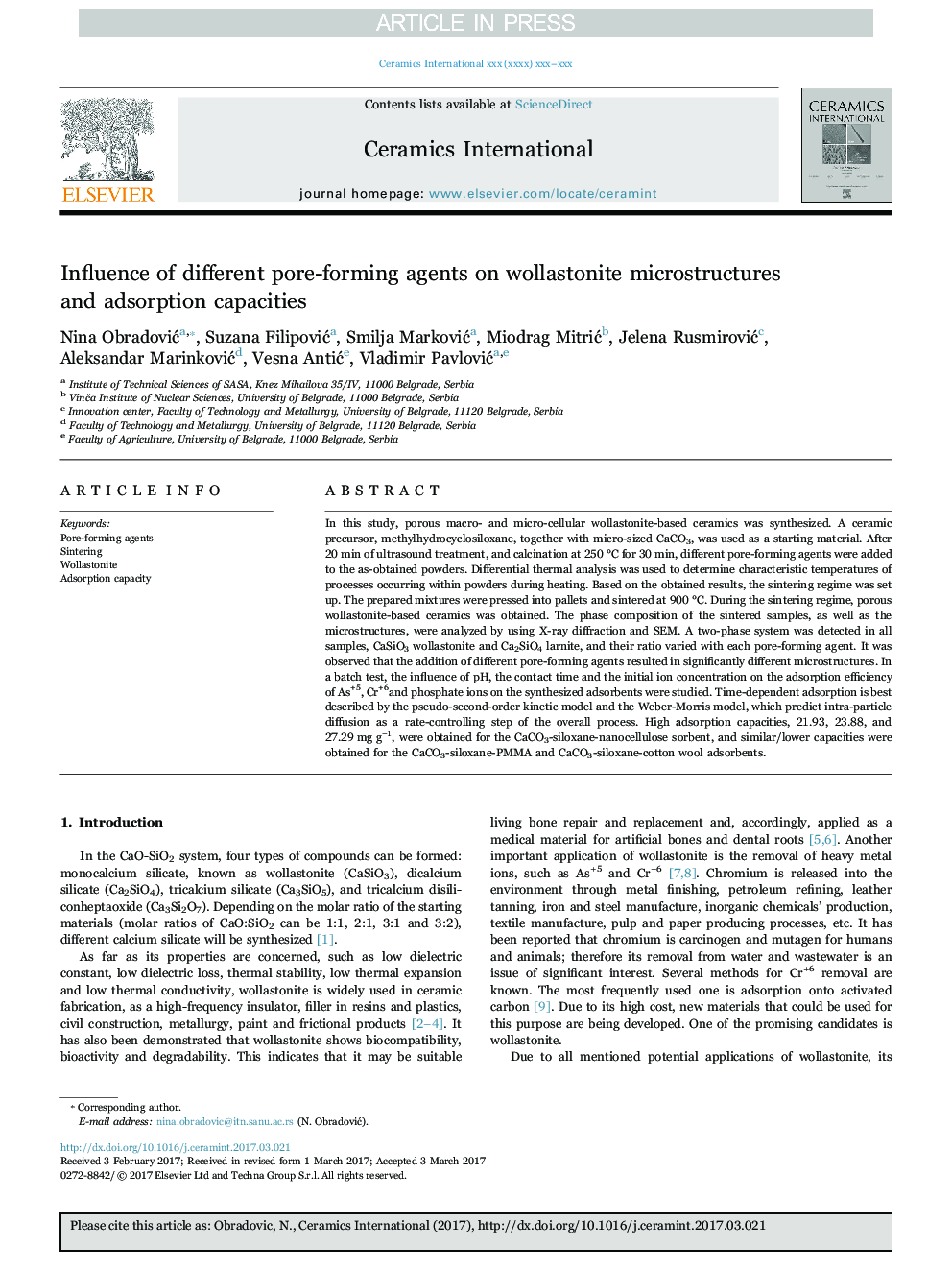| Article ID | Journal | Published Year | Pages | File Type |
|---|---|---|---|---|
| 5438522 | Ceramics International | 2017 | 8 Pages |
Abstract
In this study, porous macro- and micro-cellular wollastonite-based ceramics was synthesized. A ceramic precursor, methylhydrocyclosiloxane, together with micro-sized CaCO3, was used as a starting material. After 20 min of ultrasound treatment, and calcination at 250 °C for 30 min, different pore-forming agents were added to the as-obtained powders. Differential thermal analysis was used to determine characteristic temperatures of processes occurring within powders during heating. Based on the obtained results, the sintering regime was set up. The prepared mixtures were pressed into pallets and sintered at 900 °C. During the sintering regime, porous wollastonite-based ceramics was obtained. The phase composition of the sintered samples, as well as the microstructures, were analyzed by using X-ray diffraction and SEM. A two-phase system was detected in all samples, CaSiO3 wollastonite and Ca2SiO4 larnite, and their ratio varied with each pore-forming agent. It was observed that the addition of different pore-forming agents resulted in significantly different microstructures. In a batch test, the influence of pH, the contact time and the initial ion concentration on the adsorption efficiency of As+5, Cr+6and phosphate ions on the synthesized adsorbents were studied. Time-dependent adsorption is best described by the pseudo-second-order kinetic model and the Weber-Morris model, which predict intra-particle diffusion as a rate-controlling step of the overall process. High adsorption capacities, 21.93, 23.88, and 27.29 mg g-1, were obtained for the CaCO3-siloxane-nanocellulose sorbent, and similar/lower capacities were obtained for the CaCO3-siloxane-PMMA and CaCO3-siloxane-cotton wool adsorbents.
Related Topics
Physical Sciences and Engineering
Materials Science
Ceramics and Composites
Authors
Nina ObradoviÄ, Suzana FilipoviÄ, Smilja MarkoviÄ, Miodrag MitriÄ, Jelena RusmiroviÄ, Aleksandar MarinkoviÄ, Vesna AntiÄ, Vladimir PavloviÄ,
